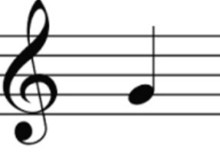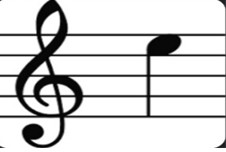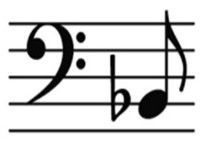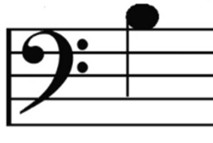What is barbershop?
Barbershop is an a cappella (unaccompanied) style of singing with 4 vocal parts. These are tenor, lead, baritone and bass. Apologies to anyone with knowledge of other singing types, for whom these names will be confusing, as they usually relate to male-range voices. Tenor is the highest range, lead mostly sings the melody, baritone sings harmony in the same range as the lead, and bass is the lowest. Barbershop arrangements make use of certain types of chords which allow the 4 voices to ‘lock’ and ‘ring’, giving this music its distinctive sound.
Which part is mine?
You get to choose! Are you most comfortable in a higher or lower range? Do you find yourself making up harmonies to your favourite songs? Have a listen to the learning tracks, and if you’re still unsure, ask us for advice.
Once you have chosen a part, you will want to be able to recognise which notes are yours on the sheet music. This is important, even if you don’t read music as many of our members cannot. The tenor and lead parts are written in the treble clef (the upper group of lines). The tenor notes that have stalks will all point upwards; the lead notes will point downwards.
|
Tenor Note
|
Lead Note
|
The baritone and bass notes are written on the bass clef (the lower group of lines). . Bari note stalks point up. Bass notes point downwards.
|
Baritone Note
|
Bass Note
|
*For those who read music, you will note that baritone and bass notes are written an octave lower than we are actually singing.
What if I don’t read music?
No problem! There is a wide range of abilities when it comes to music-reading within our chorus. Some of us are quite adept, and others only have a vague notion that the pitch rises if the notes are moving up the lines. We all rely heavily on the audio learning tracks when learning a new song.
How do I sound like a barbershop singer?
There are a few techniques that will help those chords to really ring!
Firstly, vowels are really important. We will be spending some time making sure that our ‘aahs’ and ‘oohs’ all sound the same and are being produced in a similar way. You may hear the term ‘diphthong’, which refers to the fact that many vowel sounds within a word are actually made up of multiple vowel sounds. The word ‘I’ is not just ‘I’ when sung – it is ‘aah-ee’.
Stemming from this, we want to make sure we are giving each note as much ‘vowel time’ as possible. This can be done by keeping our consonants gentle, singing all the way through to the end of a phrase, and avoiding vocal embellishments. Scoops, trills and vibrato can sound amazing when sung by a solo vocalist, but they are not an asset in the world of barbershop.
This information is provided so that you can understand why our director may be focusing on certain aspects of our singing – we certainly don’t expect you to master your barbershop sound within the space of five weeks! We are all still on that journey.
We hope you will join us!




